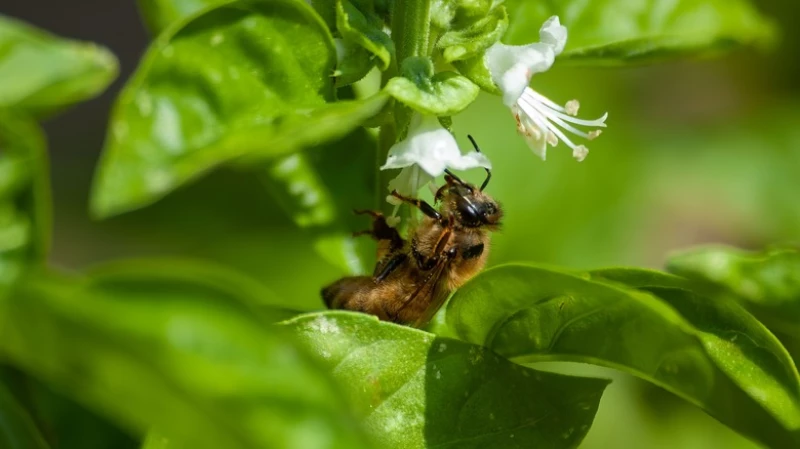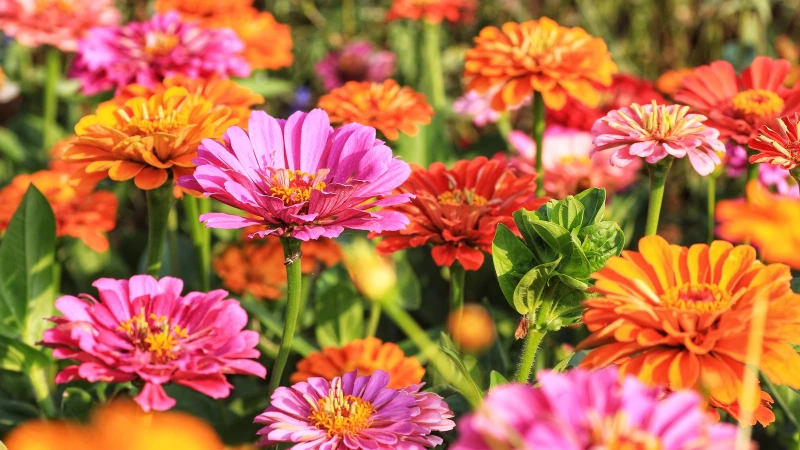The zinnia, a typically low-maintenance garden flower, is a fantastic bloomer. It does well in most conditions, even when the sun gets too hot or the soil dries out, that other plants can tolerate. These flowers are noted for their bright colors and for adding stunning foliage to your flowerbeds, but they could use a bit of help to reach their true potential. Planting zinnias with other plants to support their need for significant pollination is best. One specific plant that grows happily with zinnias is basil.
Basil is an excellent companion plant for zinnias for several reasons. First, it's a fantastic pollinator, drawing in bees and birds to help provide the necessary pollination to support the zinnia's blooms. This often allows for extending the blooming season as well — from the first weeks of summer and through the fall until the first frost. Basil and zinnias also need the same basic conditions to thrive. Preferring full sun for 6 to 8 hours a day. Keep in mind that you'll need some space between the two since zinnias can grow tall and limit sun exposure to shorter basil planted too close. Both plants do well with sun and heat, but when there's too much shade or moisture that doesn't dissipate fast enough, both plants are susceptible to mildew and fungus growth. By creating a supportive environment, both of these plants should thrive.
Strategies for maximizing the potential of a zinnia and basil garden

When it comes to companion planting zinnias and basil, it's important to understand the specific needs of each variety. Zinnia elegans, the most popular type of zinnia in North America, is a great choice for adding statement blooms and a variety of flower shapes to your flowerbed. To ensure successful pollination, plant your basil within a few feet of the zinnias. It's also important to provide ample air circulation, so remember to trim back the base stems of the zinnias to keep the ground open.
Late spring is the perfect time to plant both zinnias and basil. Whether you choose to grow them from seed or purchase starter plants, you have plenty of options. Get creative with your planting by placing one zinnia and one basil plant in a long window box. This way, you can enjoy the beautiful view every day. Keep in mind that zinnias need about 6 inches of space between each other, while basil benefits from at least 4 inches and up to 8 inches of space. This makes them a great choice for container gardening. The best part is that both plants can be continuously picked and harvested throughout the year, allowing new buds to form. Although they are annuals and only last for a year, zinnias and basil are excellent additions to any garden.







